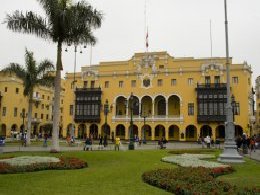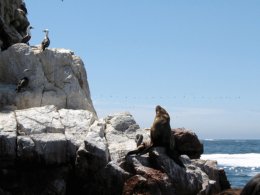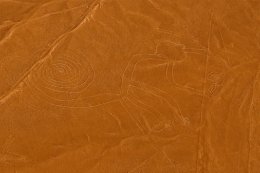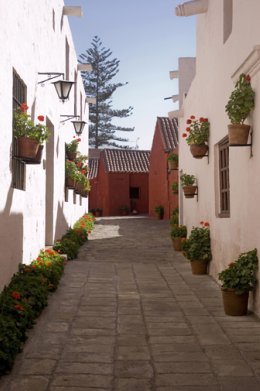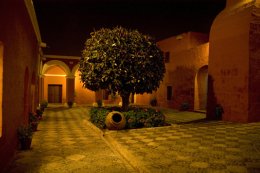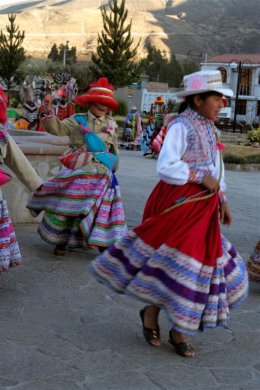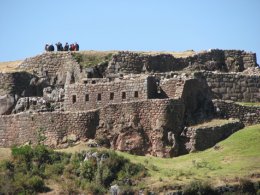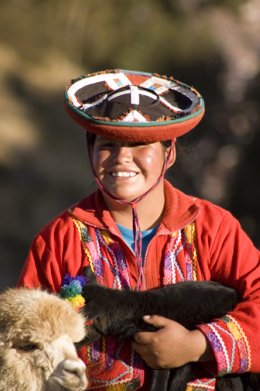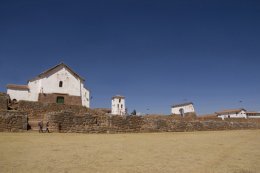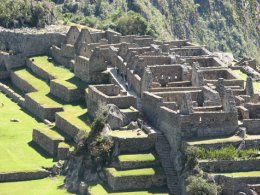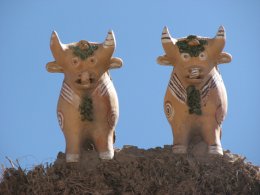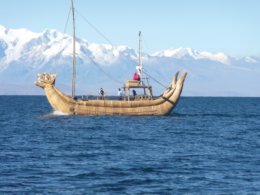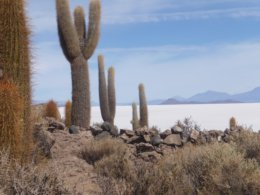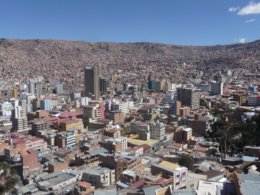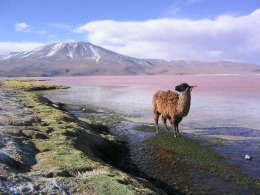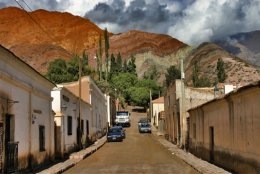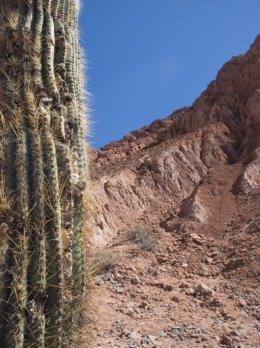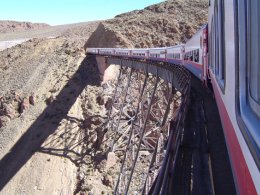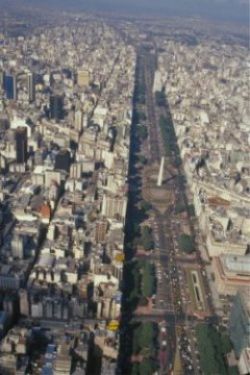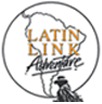Inca Explorer
Day 1: Friday – Lima
Arrive Lima, the Capital of Peru and the City of Kings. You'll transfer to your hotel in the Miraflores district.
Day 2: Saturday – Lima (B)
Lima, the City of Kings and the Capital of Peru is where we kick off this spectacular tour. Lima was the principal city of Spanish South America from its founding in 1535, until the independence of the South American republics in early 19th Century.
You have the whole day to explore Lima! A city tour of the Greater Colonial Lima allows you to appreciate the wonderful colonial buildings in downtown Lima such as the Santo Domingo Convent and the Casa Aliaga, one of South America’s oldest Spanish homes. We'll drive by the elegant tree-lined avenues of San Isidro and Miraflores. And in the afternoon there is an optional visit to the world famous Gold Museum where you can browse through the unique ceramics gold and weavings. There is also one of the world’s largest collections of armoury and a very extensive display of Pre-Columbian textiles.
Day 3: Sunday – Lima – Paracas (B)
On day 3 we head south by bus along the Panamericano Highway through desert countryside, alongside the Pacific Ocean to Paracas. In the afternoon we have included an excursion into the Paracas Nature Reserve, a marine sanctuary located at the shore of the Pacific Ocean.
Day 4: Monday – Paracas-Nasca (B)
In the morning we visit the Ballestas Islands, known as Peru’s mini-Galapagos. A great opportunity to watch resident and migratory birds, including flamingos, red-legged cormorants, Inca terns, bobbies, and playful sea lions, amusing Humboldt penguins and, if we are lucky, we might see marine otters.
In the afternoon we travel by bus to Nasca. This small oasis town is famous for the mysterious lines etched in the desert pampas. Are they messages to travellers from outer space that landed here thousands of years ago or the works of an ancient culture depicting a planting calendar? Cut into the stony desert, like a giant sketching pad, these many lines include geometrical figures, giant animals and birds. Day 5: Tuesday – Flight over Nasca Lines - then to Arequipa (B)
This morning it is your turn to become airborne and theorise on these mysterious lines etched in the desert. You'll enjoy a flight over these amazing lines – the only way to appreciate this archaeological mystery. Come away with your own theories and questions!
In the afternoon we depart on our super comfy bus, arriving in Arequipa late evening. Day 6: Wednesday – Explore Arequipa (B)
The beautiful city of Arequipa sits 2,300 metres above sea level and is the gateway to the Colca Canyon.
Lying at 2880 metres above sea level at the foot of El Misti Volcano (5882m) is the ‘Ciudad Blanca’ – the white city, boasting a delightful climate, plenty of fascinating colonial buildings and gateway to the famous Colca Canyon, home of the condors, one of the world’s deepest canyons. Must sees here are a visit to the peaceful Santa Catalina Convent, one of the most fascinating religious colonial buildings in Peru. The convent, opened to visitors in 1970, is surrounded by imposing walls and the 450 nuns who lived here led a completely secluded life. Also here is “Juanita” the mummy of a young girl found in 1995 by an American mountain climber on Mt Ambato. She is encased in a freezing chamber inside the Museum and open for viewing. Day 7: Thursday – Arequipa-Colca Canyon (B/D)
Drive through the awesome Colca Canyon, one of the world’s deepest canyons it is only accessible by a dirt road over the Altiplano before dropping to the village of Chivay at 3600 metres above sea level. The landscape is remarkable for its Inca and pre-Inca terracing which goes on for many kilometres and is the most extensive in Peru. Life here has changed very little through the centuries where the campesinos still farm the remarkable Inca terracing as their ancestors did before them.
We continue deep into the Canyon to the Cruz de las Condors. This is a remarkable highlight – you can watch the impressive condors rising with the thermals – your chance to get great photos of these wonderful birds.Stay overnight in the small village of Chivay where you can relax in the hot thermal springs and delight in the haunting melodies of the panpipes. Day 8: Friday – Colca Canyon-Cusco (B/L)
We then continue our journey of discovery and exploration into the hinterland of the Andes travelling overland to Cusco arriving early evening.
Day 9: Saturday – Cusco (B)
Cusco is the heart of the Inca Empire, known by the local Quechua Indians as the 'Navel of the Universe'. Cusco is an amazing experience. Lying in an exceptionally beautiful countryside 3,300m above sea level, here you will encounter a fine blend of Spanish and Inca cultures, colourful Quechua Indian markets, Inca temples and massive stone walls which form the foundations of Colonial Cusco - originally part of the impressive monument of Sacsayhuaman, situated above the town. Morning at leisure. In the afternoon enjoy a comprehensive walking tour of this delightful city, including the Cathedral, Plaza de Armas, and the Temple of the Sun.
Day 10: Sunday – Cusco-Sacred Valley (B)
On Day 10 we visit the Sacsayhuaman. This magnificent Inca fortress overlooks the city of Cusco. Sacsayhuaman can be variously translated as 'speckled falcon' or 'speckled head'. The last interpretation refers to the belief that the city of Cusco was set out in the form of a puma whose head was the hill of Sacsayhuaman. The origins are uncertain but the fortress is generally attributed to the period of Inca Pachacuti, the man who essentially founded the Inca empire.
We also visit the ruins of Qenko, an area of well-preserved archaeological ruins and the Red Fortress of Puca Pucara. We'll drive through stunning scenery to Chinchero, the most colourful and authentic market in Peru before continuing on to Maras Salt Pans. Here we undertake another fabulous walk today. Discover these amazing salt pans still mined as they were hundreds of years ago. We'll also visit Moray – these unusual Inca ruins consist of several enormous terraced circular depressions, the largest of which is about 30m deep. We continue through the Sacred Valley to our hotel Day 11: Monday – Cusco-Sacred Valley (Trekkers in group depart for Inca Trail Day 1) (B)
Continuing through the beautiful Sacred valley of the Incas, our next destination is Pisaq where you will enjoy a panoramic walk along the original Inca pathways and terracing to the ancient town below. Here you can visit the markets then continue through this lush valley where the towering fortress of Ollantaytambo dominates the surrounding area.
Day 12: Tuesday – Train to Aguas Calientes (or Day 2 Inca Trail) (B)
After breakfast you have an early morning transfer to Ollantaytambo to catch the train to Aguas Calientes, a small railroad town with tons of character – On arrival, here you enjoy a soak in the hot pools under the Andean sky or explore the town.
Day 13: Wednesday – Bus to Machu Picchu-Cusco (or Day 3 – Inca Trail) (B)
It’s an early start today. This is the best time to enjoy the peace and tranquillity, and not to mention the magic of Machu Picchu before the trainload’s of visitors arrive. Machu Picchu, known also as ‘Lost City of the Incas’ is undoubtedly the best known and most spectacular archaeological site on the continent and is considered a must for all visitors to Peru. You will travel by bus up the zig-zag, the Hiram Bingham highway, to the ruins where your first views will take your breath away. Here you will enjoy a fully guided tour of the ruins, and then some time to explore on your own, before returning down the mountainside. We'll have time for a snack and then board the train to Ollantaytambo and finnaly a transfer to our hotel in Cusco.
Day 14: Thursday – Cusco (or Day 4 Inca Trail) (B)
A free day today to explore this delightful city – everyone’s favourite. The day is yours to enjoy - all the convents, churches, museums, alpaca and jewellery bargains at your fingertips.
Day 15: Friday – Cusco-Puno (B/L)
A bus ride today to Puno through the dramatic landscapes of the highland plateau, with occasional views of tiny Andean villages and herds of llamas and vicunas. We will stop at Andahuaylillas, where there is a beautiful baroque church built at the beginning of the 17th Century. It is very well known thanks to its beautiful mural paintings.
We will make a second stop at Raqchi, where there is an Inca temple built to worship Wiracocha, one of the most important Inca gods. Finally, we make our way to the archaeological museum of Pukara (200BC-AD300) and lunch at a restaurant en route. The afternoon is one of travel and we arrive in Puno late afternoon. Day 16: Saturday – Uros Islands-Copacabana (B)
Day 16 is one too look forward to - what an experience!
By boat we'll visit the curious floating reed islands and the Uros Indians who live there. Everything is made of these reeds - houses, schools, boats, churches, etc. Once you reach the reed islands, you can experience gliding across Lake Titicaca in an authentic reed boat - you can't beat it! We return to Puno, and in the afternoon continue through lovely scenery, following the lake border to the Bolivian border. After border formalities, we continue to the sleepy town of Copacabana. Day 17: Sunday – Copacabana-La Paz (B)
This morning is one of leisure. Either take some time to relax or to explore Copacabana. An optional boat trip out on the lake to tranquil Isla del Sol (Island of the Sun) is available. Isla del Sol is where legend has it that the first Inca King rose out of the lake. On this legendary island, you can visit the Pilkokaina Inca Palace and enjoy a short walk to the Gardens, Sacred Stairs and Fountain of the Inca. As we ascend to Yumani village, we have a magnificent view of the lake set to the backdrop of Mount Illampu.
Leaving Copacabana behind, we continue through even more stunning scenery, with snow-capped peaks and the blue lake, to La Paz - the capital of Bolivia and highest capital in the world. Known as the City of Contrasts, here ancient traditions meet the new millennium of chaotic traffic and towering buildings.
>Day 18: Monday – La Paz City Tour and Shopping (B)
A day for indulging in some viewing ans shopping! In the morning out tour takes you down to where the air is thicker and the elite live. We visit the witches markets, Calle Jaen with its museums, San Francisco Church, Plaza Murillo, National Congress, Cathedral, Presidential Palace, before continuing to the very unusual eroded formations of the Moon Valley.
The afternoon is free to enjoy the uniqueness of this colourful bustling city and shop for bargains, souvenirs and gifts. Day 19: Tuesday – Explore La Paz (B)
You've got some choices to make today! Three options:
(1) an optional tour to Tiwanaku (Pre-Columbian) ruins outside the city is available or
(2) for the more adventurous, mountain bike down the world’s most spectacular road or
(3) spend the day with a little more shopping and people watching. A great city to do that!
Day 20: Wednesday – La Paz-Uyuni-Salt Flats (B,L)
Transfer to the airport for your flight to Uyuni
The Uyuni Salt lakes area is one of impressive beauty. We spend a full day visiting the Uyuni Salt Lake. We start our day visiting the huge Uyuni Salt Lake, the cold water springs, the Colchani Salt Factory and Isla Pescado - which is famous for its giant cactus.
After lunch we continue to Coquesa Mummys before returning back to Uyuni. We have arranged the use of a hotel room at Hotel Tambo Aymara until late evening, before you will be transferred to the railway station.
Day 21: Thursday – Uyuni-Purmarmarca
We depart Uyuni on the Wara Wara Train, living it up in Executive Class.
We arrive in Villazon midday, where we will be met and transferred to the border immigration control before crossing into Argentina. We endure a short distance transfer to the bus station, before continuing by bus to Tilcara, and then another transfer to Purmamarca.
Day 22:Friday Purmarmarca (B)
Day at leisure to explore the town
Day 23:Saturday – Purmarmarca-Salta (B)
We backtrack to Tilcara to visit its archaelogical museum and Indian Fortress (entrance fee to be paid direct) visiting Leon, Tumbaya, the Seven Colours Mountain, and the Uquia Church to Purmamarca. Enoute to Salta we travel past La Cienaga Dam, Campo Alegre Dam and La Caldera, before travelling through Jujuy on the way to Salta.
Located in the northwest of the Argentine Republic, the province of Salta amazes the tourist with its geographical and cultural heterogeneity. Surrounded by three countries (Chile, Bolivia and Paraguay) and six provinces (Jujuy, Formosa, Chaco, Santiago del Estero, Tucumán and Catamarca), its vast territory covers all kinds of landscapes, from the arid desert of La Puna, to the lush green forest. This region is also the centre of the agriculatral production for Argentina, including lemons, olives, and tobacco. The region has a very pleasant climate at this time of year.
Day 24: Sunday – Salta (B)
Salta is known not only for its inhabitant’s warmth but also for its cultural heritage. It inherited the diaguita-calchaquí nation of the Inca Empire, a result of the spanish colonial past and the native spirit that fought for national independence.
In the morning we undertake a tour of Salta. Day 25: Monday – Salta-Cafayate (B)
Leaving the City of Salta, we tour around one of the most impressive circuits in the Republic of Argentina as you visit the legendary Calchaquí Valley.
In order to visit the Calchaquí Valleys and appreciate their beautiful sceneries and the quaint villages from the early 18th Century nestled in their geography, we travel a total distance of 520km through three main roads - namely Provincial Route 33 and National Routes 40 and 68. From the very beginning, fascination takes hold of travelers as they enter the San Fernando de Escoipe Ravine. Surrounded by mountains and bordered by Provincial Route 33, it sets the start of adventure. The local vegetation is typical of the mountain rain forest, with the presence of hydrophile and xerofile plants. Ancient laurels, willows, walnuts, peachtrees, poplars and some conifers are always present in the area. At the end of the Escoipe Ravine, the winding “Cuesta del Obispo” (Bishop's Slope) begins. It got its name from Monsignor Cortázar, the maximum ecclesiastical authority in Salta, who was traveling from Salta to Cachi back in 1622 and spent the night at this spot lying at 3,400m. At the top of the slope, known as “Piedra del Molino” (Millstone), lies a chapel raised to honor the Archangel Raphael, "Patron Saint of Travelers”. This spot features an unforgettable view of the endless slope, which gets mingled with the granite formation of feldspar, mica and quartz contained in the area.
Driving on, there appears a place which faithfully honors its name: the "Enchanted Valley", a dreamed-of place with red soil and green grass where the huge rocks and the uneven terrain astonish the most daring visitors, who are used to being delighted by natural wonders.
We continue on to Los Cardones National Park where the road leads to Cachi Pampa – "salt pampa” in the Cacán tongue. After a few kilometres, the Tin Tin Straight is entered. Fully paved, this 12km long stretch displays the impressive snow-capped Curacatao summits in the distance. The tour features the characteristics of the scenery, totally worth beholding. A little further, the town of Cachi opens its gates to show its simple beauty. It is a good moment to make a stop, rest for a while and tour around the purely colonial district.
Cachi means “salt” in the Quechua or Cacán tongue, and it was given such a name by the local natives, who had mistaken the summit of Nevado for a big salt deposit. When touring around the village, visitors can appreciate the politeness of the people, who appear to be in tune with the architectural surroundings.
We continue through Molinos to the wine growing region of Cafayate, where we end our day's travel. Day 26: Tuesday – Cafayate-Salta-Buenos Aires (B)
We taken in the sights of Cafayate thsi morning - dunes and vineyards in a fertile valley surrounded by colourful mountains, which provide the perfect back drop to taste delicious wines from an ancient cellar.
We return to Salta through the "Quebrada de las Conchas" (Shells Ravine) where traces of prehistoric times still remain in the many aeolic formations - such as The Theatre, The Devil's Throat, The Toad etc. As we get closer to Salta, the vegetation becomes more lush as we descend down towards the city. On arrival we transfer to the airport for our evening flight to Buenos Aires, and transfer to our hotel on arrvial. Day 27: Wednesday – Buenos Aires (B)
This morning we embark on a three and a half hour sightseeing tour visiting the most outstanding sites of Buenos Aires.
Departing from the Hotel we travel to 9 de Julio Ave. the widest in the world, past the famous Colon Opera house, the Obelisk commemorating the first founding of the city in 1536 to get to Plaza de Mayo (May Square), and the buildings surrounding it. Plaza de Mayo is home to Government House, Metropolitan Cathedral with the Mausoleum of General San Martin, Argentina’s greatest national hero and the Cabildo, the colonial town hall built in 1751. After some sight-seeing we are then off to La Boca, the typical Italian district, where first italian immigrants settled and ‘Caminito’ street. The tour continues to Buenos Aires port area, past San Martín Square towards Palermo Chico residential district and Palermo Park with its jacaranda and palo borracho trees which flower in the spring and late summer. The ride continues to Recoleta elegant district to visit Recoleta Cementery where the famous are laid to rest (including Eva Peron). We return to the hotel along the stylish Alvear Ave. Day 28: Thursday - Depart Buenos Aires (B)
A day at leisure until we are transferred to the airport for your onward flight.
|
||
Dates & Prices:
Departures: Fridays
2026 8May,12Jun,7Aug,4Sep NZ$11400 Single supplement NZ$2790 Independent Departures : Friday weekly - NZ$11600 based on a minimum of 2 persons Inca Trail option: additional NZ$790 , 1 day Inca Trail $230 Iguassu & Rio Extension: NZ$2175 per person Costs are subject to airfare increases and currency fluctuations – there are no hidden costs. So no unpleasant surprises once you are in South America - you know before you leave exactly what this trip will cost. Having to dip into your money belt to pay for 'EXTRAS' like some companies do is not required (unless attending optional activities). We pride ourselves on being totally upfront before you leave. Compare our inclusions for yourself – detailed on our Trip Dossier. We want your adventure to be as hassle-free as possible – so you can expect the following on the ‘Inca Explorer’.
NOTE ON FLIGHTS: All flights are economy class with scheduled airlines All flights are subject to airline increases, fuel surcharges and change. |
||
Inclusions: - All flights between Lima & Buenos Aires - ALL transport (boats, buses, taxis, trains etc) - ALL accommodation with breakfasts (twin share) - Breakfast daily, plus 3 Lunches and 1 dinner - ALL transfers as per itinerary - ALL entrance fees as per itinerary - ALL national park entrance fees - ALL sightseeing as per itinerary - Services of English speaking local guides - Latin Link Tour Manager( subject to a minimum of 6 persons travelling) Exclusions: - Tips (allow US$200) - Insurance - Laundry - Personal Spending - Medical Expenses |
||

















